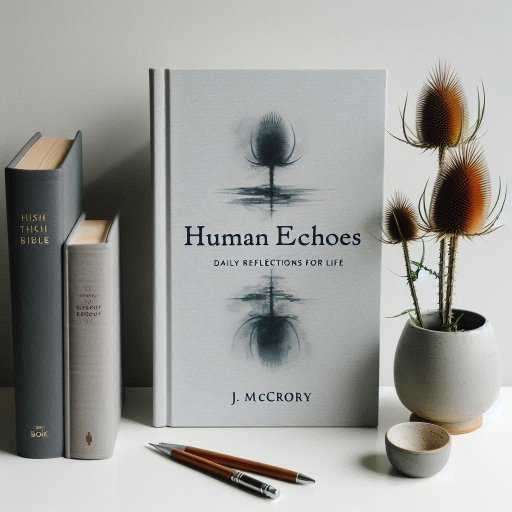"I too am flawed, yet the moon still reflects my shadow."

Image generated with the assistance of Microsoft Word
Golden Joinery: Embracing Imperfection through the Lens of Kintsugi
It was a beautiful day on Scotland's west coast yesterday and my wife and I visited one of the nearby islands for a walk and to embrace nature. As often the case, I meet people and chat with them. Mostly tourists like us. One thing I noticed when out enjoying the natural environment is that I see the best in people. When in the hub of society, it tends to bring out the negative. I began musing over this as I walked embracing my own thoughts on the matter. This morning I decided to pen what I concluded.
In a world quick to criticize and slower to commend, there lies a potent metaphor in the ancient Japanese art of kintsugi, which teaches us to see beauty in the broken. The haiku, "I too am flawed, yet the moon still reflects my shadow," captures the essence of this philosophy, reminding us that our imperfections do not diminish our value or worth.
Kintsugi, or "golden joinery," transforms broken pottery into striking works of art by mending the cracks with lacquer mixed with precious metals. Originating in the late 15th century during Japan's Muromachi period, kintsugi was born from a dissatisfaction with the mundane repair methods of the time. When Ashikaga Yoshimasa, a prominent shogun, received his cherished tea bowl repaired with unsightly metal staples from China, it prompted Japanese craftsmen to find a more aesthetically pleasing solution. Thus, kintsugi was created, turning flaws into features that tell stories of survival and resilience.
This art form parallels a profound spiritual insight: in recognizing our flaws, we can also see the potential for transformation and redemption. It encourages us to adopt a perspective of shoshin, a concept meaning "beginner's mind," which involves seeing the familiar with fresh eyes and an open heart.
Consider the encounter between Jesus and the rich young ruler, as recounted in the Gospels. Here was a man outwardly flawless, observant of all commandments from his youth. The writer, Mark, acknowledges that Jesus loved him. yet Jesus, seeing deeper, recognized a hidden imperfection—a heart overly attached to wealth. With love and sincerity, Jesus offered the young man a path towards true fulfilment: to sell his possessions, give to the poor, and follow Him. The young ruler, however, turned away sorrowfully, unable to accept the transformative journey Jesus offered.
Jesus's response to the young man exemplifies the essence of kintsugi. He did not dismiss the ruler's efforts or sincerity but pointed out the area in his life that needed 'golden joinery.' This story challenges us to view our own imperfections and those of others not as irreparable breaches but as opportunities for divine enrichment.
Living with this mindset requires a blend of grace and truth. We must acknowledge our brokenness—our spiritual cracks—and invite the golden repair that can only come from a power greater than ourselves. It is a daily practice of renewal, where we learn to appreciate not only the intact parts of our lives but also the beauty of our scars.
In a culture that often emphasizes perfection and hides vulnerability, kintsugi offers a counter-narrative. It celebrates each crack in the human vessel as a part of the unique tapestry of our lives, each line filled with golden resin a testament to our resilience and capacity to heal. It teaches us that our broken places can become the most valuable parts of our story, beautifully restored through patience and care.
Thus, as we navigate our own landscapes of imperfection, let us embrace the wisdom of kintsugi. May we see in ourselves and in each other not just the flaws but the potential for something richer and more beautiful. Like the moon that does not cease to shine its light on even the most flawed among us, let us reflect a vision that highlights beauty in the breaks, dignity in the damage, and treasure in the trials. Through this lens of compassionate restoration, we truly see that what is broken can indeed be made whole again, and perhaps, even more beautiful than before.
Mark 10:17-31 (BSB).
As Jesus started on His way, a man ran up and knelt before Him. “Good Teacher,” he asked, “what must I do to inherit eternal life?”
“Why do you call Me good?” Jesus replied. “No one is good except God alone. You know the commandments: ‘Do not murder, do not commit adultery, do not steal, do not bear false witness, do not cheat others, honor your father and mother.’”
“Teacher,” he replied, “all these I have kept from my youth.”
Jesus looked at him, loved him, and said to him, “There is one thing you lack: Go, sell everything you own and give to the poor, and you will have treasure in heaven. Then come, follow Me.”
But the man was saddened by these words and went away in sorrow, because he had great wealth.